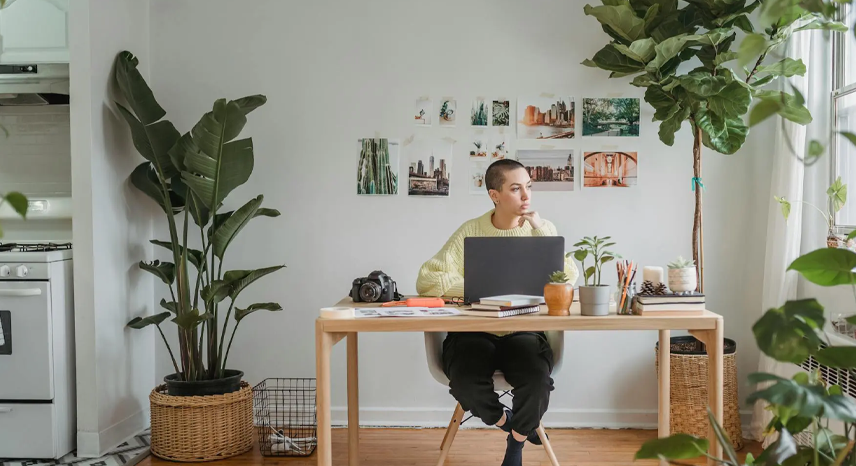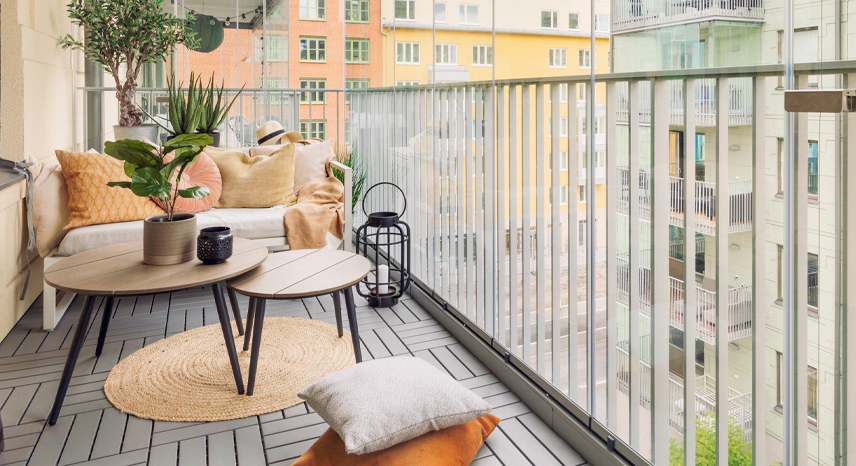How to Create an Efficient and Comfortable Work-From-Home Office Setup
Time 5 min(s) read
The rise of remote work has changed the way we approach our daily routines.
The rise of remote work has changed the way we approach our daily routines. Many individuals are now working from home full-time or on a hybrid basis, which means the home office has become a critical space for both productivity and comfort. A well-designed office setup can enhance focus, creativity, and overall work performance.
Creating an efficient and comfortable office for your work-from-home experience requires careful consideration of several factors, including organisation, and atmosphere. In this blog post, we’ll explore how to design an office that supports productivity while ensuring comfort.
1. Choose the Right Location for Your Home Office
The first step in creating a functional work-from-home office is selecting the right space. Ideally, this should be a quiet, separate area where you can focus without distractions. If you have a spare room, that’s great, but even a well-defined corner of your living room or bedroom can work as long as you make it your own.
If possible, avoid setting up your office in high-traffic areas of the house, such as next to the kitchen or near the front door. These areas tend to have more distractions and can make it difficult to maintain focus during work hours. Consider using room dividers or curtains to create separation between your workspace and other areas.
2. Invest in Ergonomic Furniture
Ergonomics is crucial for ensuring comfort and preventing strain during long work hours. A good office chair is a must-have, as it supports your back and promotes good posture. Look for a chair with adjustable height, lumbar support, and armrests to reduce discomfort. Ergonomic chairs made of breathable materials will also help you maintain comfort throughout the day.
In addition to a comfortable chair, your desk should be spacious enough to hold all your essentials. Opt for a desk with enough surface area to accommodate your computer, notebooks, and other work-related materials. Adjustable standing desks are also a great option if you prefer alternating between sitting and standing throughout the day.
3. Ensure Proper Lighting
Lighting is another crucial factor when creating a productive home office. Natural light is ideal, as it boosts mood and energy levels while reducing eye strain. Position your desk near a window to take advantage of daylight if possible. However, avoid having direct sunlight shining onto your screen, as this can create glare and make it difficult to see your work.
In addition to natural light, invest in task lighting to ensure you can work comfortably at night or during cloudy days. Desk lamps with adjustable brightness levels are a great option, allowing you to customise the light based on the task at hand. Soft, warm lighting reduces eye strain and creates a relaxing atmosphere.
4. Organise Your Workspace
A cluttered desk can lead to a cluttered mind. Keeping your workspace organised and tidy is essential for maintaining focus and reducing stress. Invest in organisational tools such as drawer organisers, filing cabinets, or floating shelves to keep your work-related items organised and easily accessible.
Consider using digital tools like project management apps or cloud storage to keep your documents and files organised. A minimalistic approach to desk decor will also help keep distractions to a minimum. Keep only the items you need for work on your desk, and store everything else out of sight.
5. Create a Comfortable Atmosphere
While functionality is essential, the atmosphere of your office space should also promote relaxation and productivity. The design and decor of your office can influence your mood, so make sure to incorporate elements that make you feel comfortable and motivated.
Add personal touches such as artwork, plants, or family photos to create a welcoming environment. Indoor plants, in particular, can improve air quality and add a sense of tranquillity to your space. A comfortable rug can also make your office feel warmer and more inviting.
6. Consider Acoustic Privacy
Sound can be a major distraction during work hours if you have a busy household or live in a noisy area. To create an environment conducive to focus, consider using noise-cancelling headphones or adding soundproofing elements to your office.
Adding soft materials like curtains, carpets, or acoustic panels to the walls can help absorb sound and reduce noise levels. If noise is a concern, you might also consider setting up your office away from noisy areas, such as the kitchen or near street-facing windows.
7. Take Breaks and Stay Active
Sitting for long hours can negatively affect your physical health, so it's important to incorporate movement into your day. Consider using a standing desk, taking regular breaks, or investing in an under-desk treadmill or balance board to stay active while working.
Try to schedule time during the day for short walks, stretching, or yoga. These activities will help reduce stress and keep you energized throughout the workday.
Creating a work-from-home office that balances productivity and comfort is key to maintaining focus and well-being while working remotely. By carefully considering your furniture choices, lighting, organisation, and overall atmosphere, you can design a space that enhances your work experience and boosts your productivity.



